Ajunghosu Lake (아중호수)
15.8Km 2024-05-02
Ua-dong 1(il)-ga, Deokjin-gu, Jeonju-si, Jeonbuk-do
Ajunghosu is a large-scale reservoir that was originally built for agricultural purposes but is now beloved as cultural and natural space for local residents. The lake features a wooden deck walkway that creates a beautiful scene at night when lit up.
Gogung Jeonju Main Branch (고궁 전주본점)
15.9Km 2025-04-22
전북특별자치도 전주시 덕진구 송천중앙로 33
063-251-3211
This restaurant has more than 50 years of tradition. You can choose between brass or hot stone pot for your bibimbap bowl, and it offers yellow mung bean jelly, an important part of Jeonju bibimbap, as a salad. On the second floor, you can find an exhibition space showcasing the history of Jeonju bibimbap.
Archaeological Site in Wanggung-ri [UNESCO World Heritage] (익산 왕궁리유적 [유네스코 세계문화유산])
15.9Km 2024-04-07
666, Gungseong-ro, Iksan-si, Jeonbuk-do
+82-63-859-4631
Archaeological Site in Wanggung-ri, designated as Historic Site No. 408 on September 17, 1998, has a surface area of 216,862 square meters. The site has various structures and artifacts from Baekje dynasty to unified Silla period. Artifacts were found within the rectangular-shaped fortress site that surrounds Wanggungri Five-story Stone Pagoda, National Treasure No. 289.
Deokjin Park (덕진공원)
16.0Km 2024-04-07
390, Gwonsamdeuk-ro, Deokjin-gu, Jeonju-si, Jeonbuk-do
+82-63-239-2607
Deokjin Park is a representative city park of Jeonju. Officially designated a city park in April 1978, it is centered around a natural pond, which dates back to the Goryeo dynasty (918-1392). The park is such a landmark of the area that the lotus flowers blooming in the park’s large pond are considered one of the most impressive attractions of Jeonju. The park spans an area of 13,000 ㎡ with the pond covering about two thirds of the southern sector. An arch-shaped suspension bridge stretches across the middle of the pond, offering up-close views of the lotus blossoms.
Park designers created a traditional pavilion and a water iris garden in honor of the park’s historical background and added an artificial waterfall and wooden bridge for visual effect. The park also houses nine stone monuments including the Children’s Charter, engravings of Shin Seok-jeong and Kim Hae-gang’s poetry, and a statue of General Jeon Bong-jun.
The park is the site of the annual Dano Changpomul (Water Iris) Festival, a much-anticipated event held on the day of Dano (a Korean traditional holiday that falls on the fifth day of the fifth lunar month). During the celebration, women wash their hair in iris-infused water from the pond to wish for good health in the coming year.
Samcheok Cheokjudonghaebi & Pyeongsutochanbi Monuments (삼척 척주동해비 및 평수토찬비)
16.0Km 2023-04-18
13-7, Heomok-gil, Samcheok-si, Gangwon-do
+82-33-859-5708
Erected by Heo Mok, the governor of Samcheok during the second year of King Hyeonjeong's reign (1661), Cheokjudonghaebi Monument is 170 centimeters tall. It was originally built to protect the village on Mallido Island that had been frequently inundated by heavy rain and rough waves. It is believed that the mystical inscription, penned by Heo Mok, on the monument calmed the rough sea waves. Today, the monument stands to prove the wisdom and distinguished penmanship of the former Samcheok City Governor.
Pyeongsutochan-bi Monument is 145 centimeters tall. It was erected by Heo Mok's successor and former governor of Samcheok, Jung Un-cheol, in reverence for his wise forebear. The monument contains
48 ancient Chinese characters that describe many achievements of Heo Mok.
Wanggung Five-story Stone Pagoda (익산 왕궁리 오층석탑)
16.0Km 2024-04-07
San 80-1, Wanggung-ri, Wanggung-myeon, Iksan-si, Jeonbuk-do
+82-63-859-5708
The Wanggung Five-story Stone Pagoda is located on a hill about 2 kilometers south of Wanggung-myeon in Iksan, which is believed to have been the capital of the nation during the Mahan Era. The pagoda stands tall at 8.5 meters and was officially designated as a National Treasure. Relics from the Goryeo dynasty that were found inside the pagoda were designated as a National Treasure and are currently housed in the National Museum of Korea. Of the excavated relics, the most famous; the Sarijangeomgu, a magnificent container of Buddha’s Sarira; the green glass Sarira bottle topped with a lotus-shaped stopper; and the Sungeumgeumganggyeongpan, which contains the 19 golden plates of the Diamond Sutra.
Bongi Seolleongtang (봉이설렁탕)
16.0Km 2024-04-07
576, Baekje-daero, Deokjin-gu, Jeonju-si, Jeonbuk-do
+82-63-271-0912
Seolleongtang (ox bone soup) is Korea's representative health food rich in protein. The best menu at this restaurant is ox bone soup. This Korean dishes restaurant is located in Jeonju-si, Jeollabuk-do.
Iksan Seodong Festival (익산서동축제)
16.0Km 2024-04-07
41-14 Godo 9-gil, Geumma-myeon, Iksan-si, Jeonbuk-do
+82-63-843-8817
Iksan Seodong Festival is held in Seodong Park in Iksan. Iksan is home to the love story of Prince Seodong, who would later become King Mu, for Princess Sunhwa. The festival, which started as the Mahan Folk Festival in 1969, was renamed in 2004 and celebrates the 1400-year history of the Baekje Kingdom.
Wanju Samrye Culture & Arts Village (완주 삼례문화예술촌)
16.1Km 2024-04-07
81-13, Samnyeyeok-ro, Wanju-gun, Jeonbuk-do
+82-63-290-3862
Samrye Culture & Arts Village is an art village also referred to as "Samsamyeyemimi." Once used as a granary and an official residence during the Japanese administration, it has now become a village of art. The village consists of Design Museum, Visual Media Art Gallery, Kim Sang-rym Carpentry Shop (Wood Works), and Book Museum and offers a variety of programs during exhibition events and art festivals.
Jeonju Moraenae Market (전주 모래내시장)
16.1Km 2025-07-18
8-8 Moraenae 4-gil, Deokjin-gu, Jeonju-si, Jeonbuk-do
+82-63-278-5802
Along with Jeonju Nambu Market and Jungang Market, Jeonju Moraenae Market is a traditional market that represents Jeonju. It was first formed in 1970, and sells a wide variety of goods including vegetables, fruits, poultry, fish, dried fish, clothing, and general supplies. The market also gets supplied with fresh fruits from the nearby city of Wanju. Jeonju Moraenae Market is filled with delicious local foods and located in proximity to popular tourist attractions such as Jeonju Hanok Village, Gyeonggijeon Shrine, Jeondong Catholic Cathedral, National Jeonju Museumm and Moaksan Mountain.

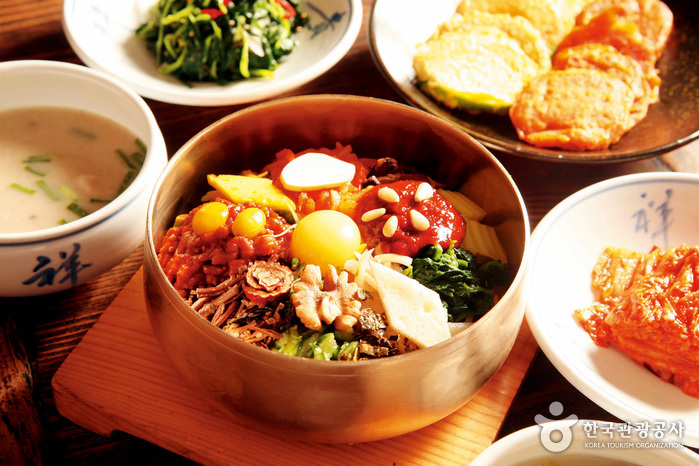
![Archaeological Site in Wanggung-ri [UNESCO World Heritage] (익산 왕궁리유적 [유네스코 세계문화유산])](http://tong.visitkorea.or.kr/cms/resource/97/2514197_image2_1.jpg)
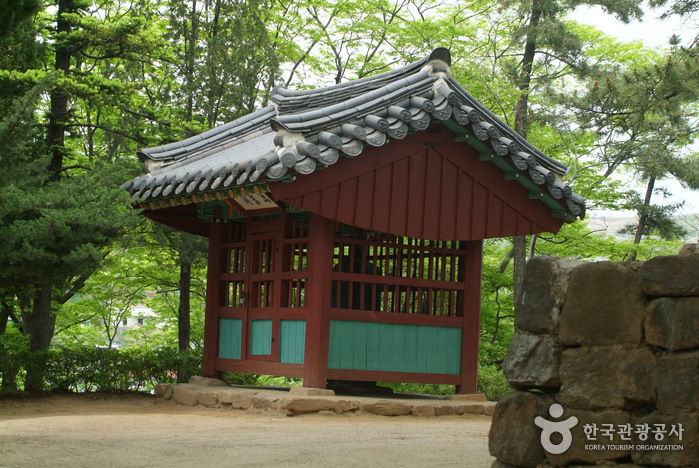
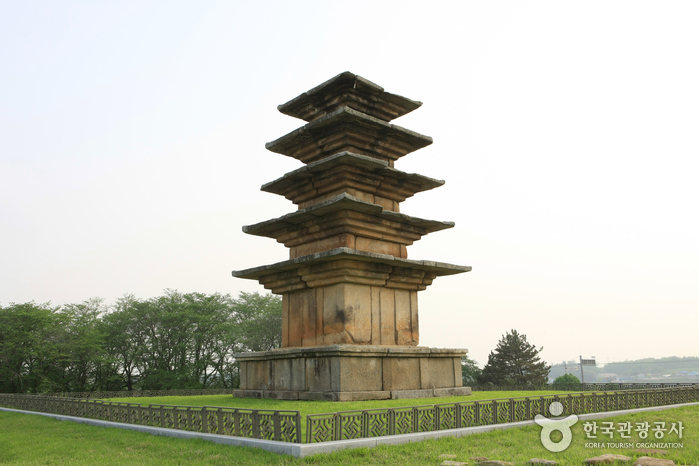
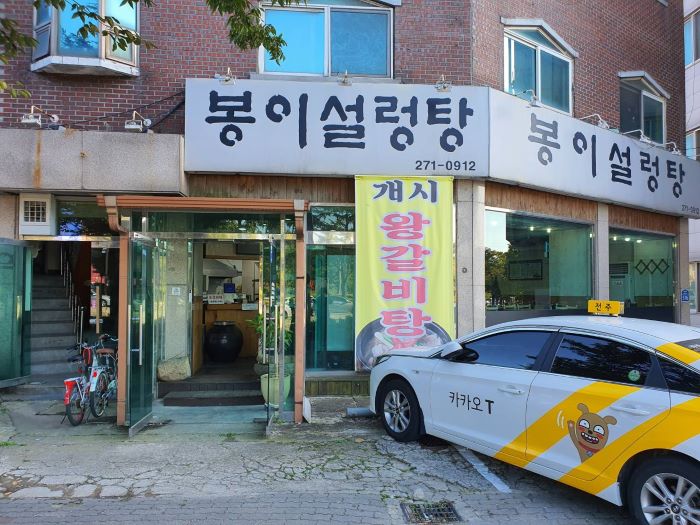
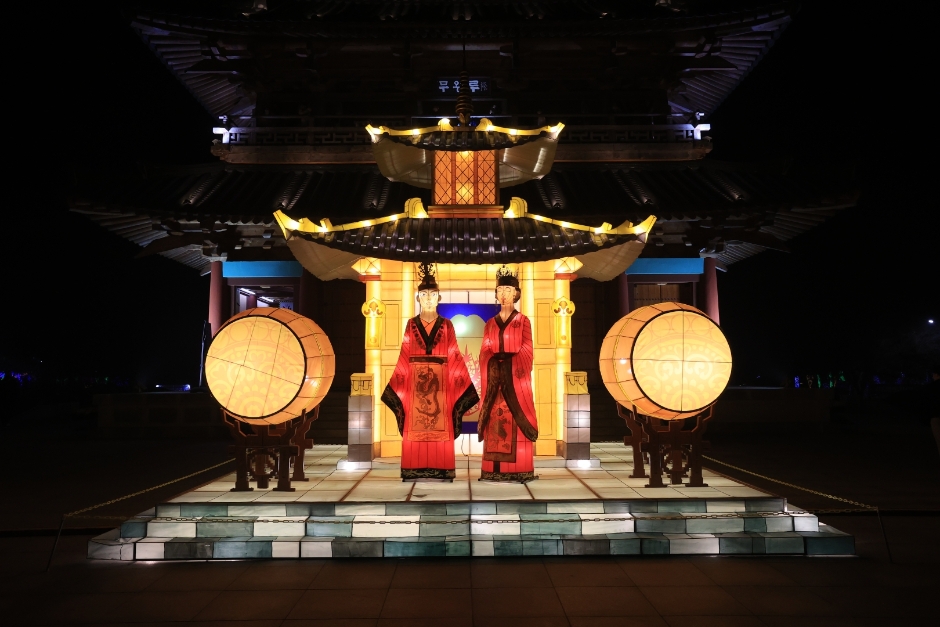
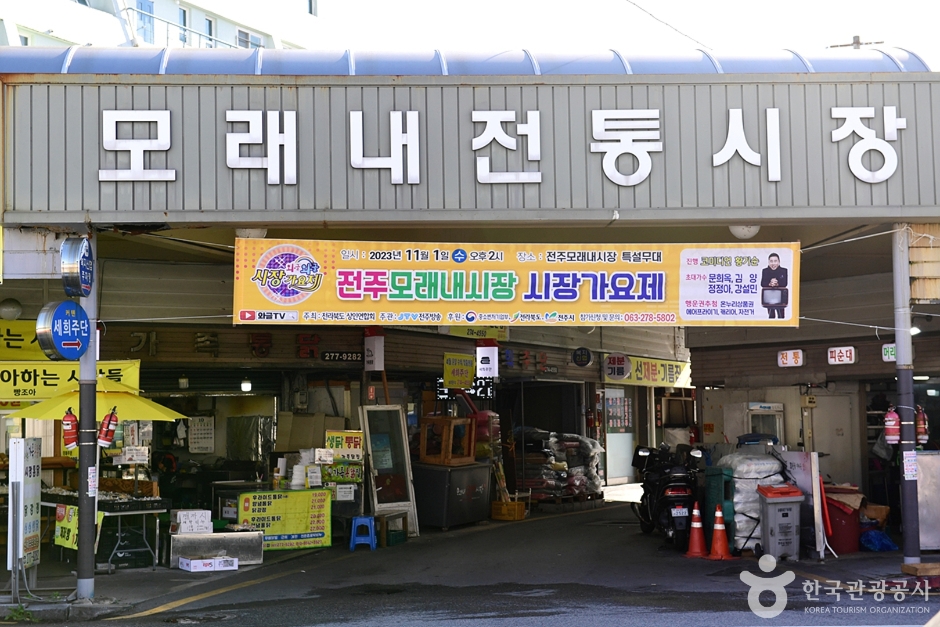
 English
English
 한국어
한국어 日本語
日本語 中文(简体)
中文(简体) Deutsch
Deutsch Français
Français Español
Español Русский
Русский